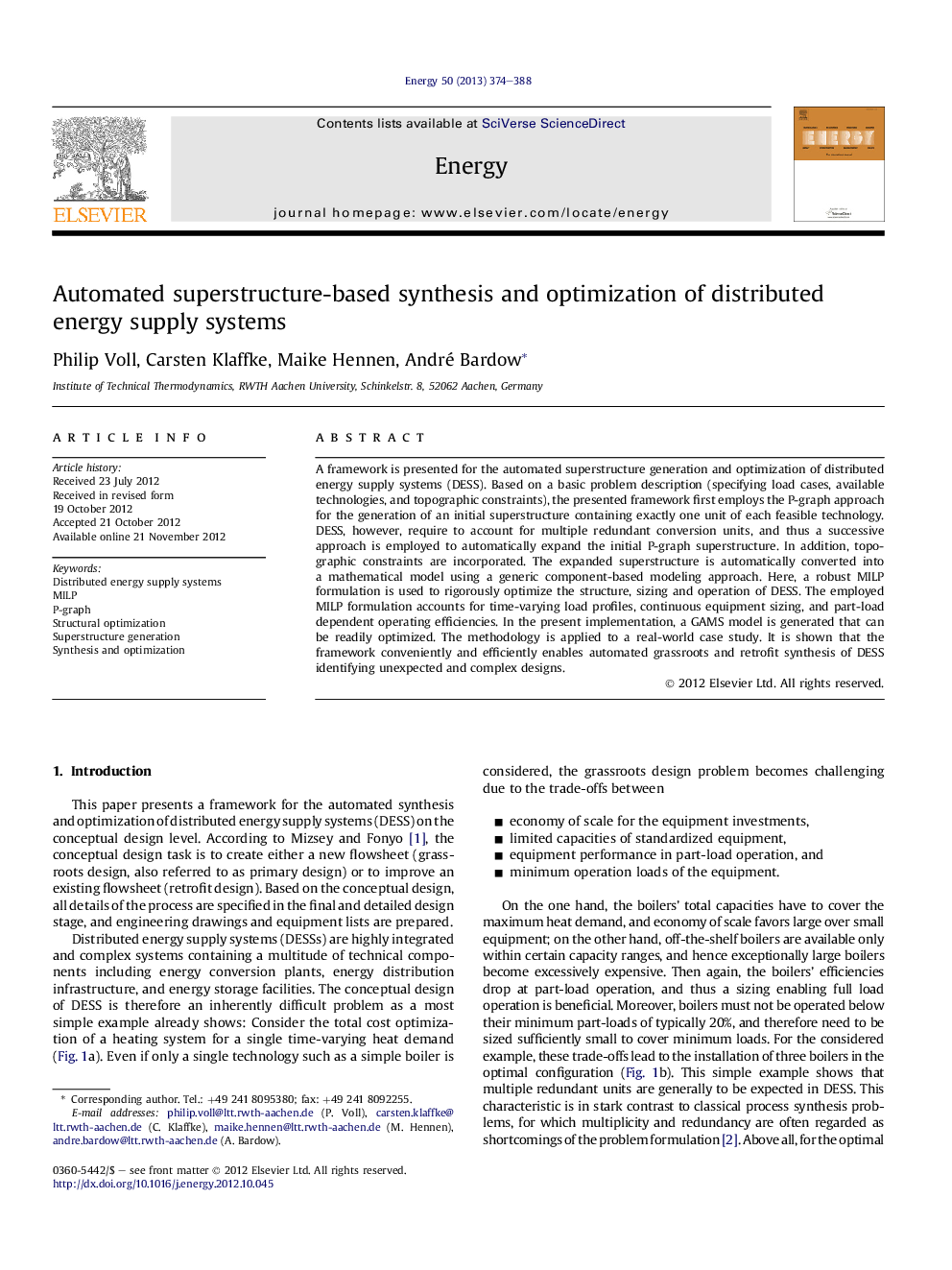| Article ID | Journal | Published Year | Pages | File Type |
|---|---|---|---|---|
| 1733248 | Energy | 2013 | 15 Pages |
A framework is presented for the automated superstructure generation and optimization of distributed energy supply systems (DESS). Based on a basic problem description (specifying load cases, available technologies, and topographic constraints), the presented framework first employs the P-graph approach for the generation of an initial superstructure containing exactly one unit of each feasible technology. DESS, however, require to account for multiple redundant conversion units, and thus a successive approach is employed to automatically expand the initial P-graph superstructure. In addition, topographic constraints are incorporated. The expanded superstructure is automatically converted into a mathematical model using a generic component-based modeling approach. Here, a robust MILP formulation is used to rigorously optimize the structure, sizing and operation of DESS. The employed MILP formulation accounts for time-varying load profiles, continuous equipment sizing, and part-load dependent operating efficiencies. In the present implementation, a GAMS model is generated that can be readily optimized. The methodology is applied to a real-world case study. It is shown that the framework conveniently and efficiently enables automated grassroots and retrofit synthesis of DESS identifying unexpected and complex designs.
► A framework for automated superstructure generation and optimization is presented. ► Customized approach for the synthesis of distributed energy supply systems. ► A generic component-based modeling framework is employed using real-life data. ► Simultaneous optimization of structure, sizing, and operation using robust MILP algorithm. ► The automated approach makes optimization accessible for practitioners.
